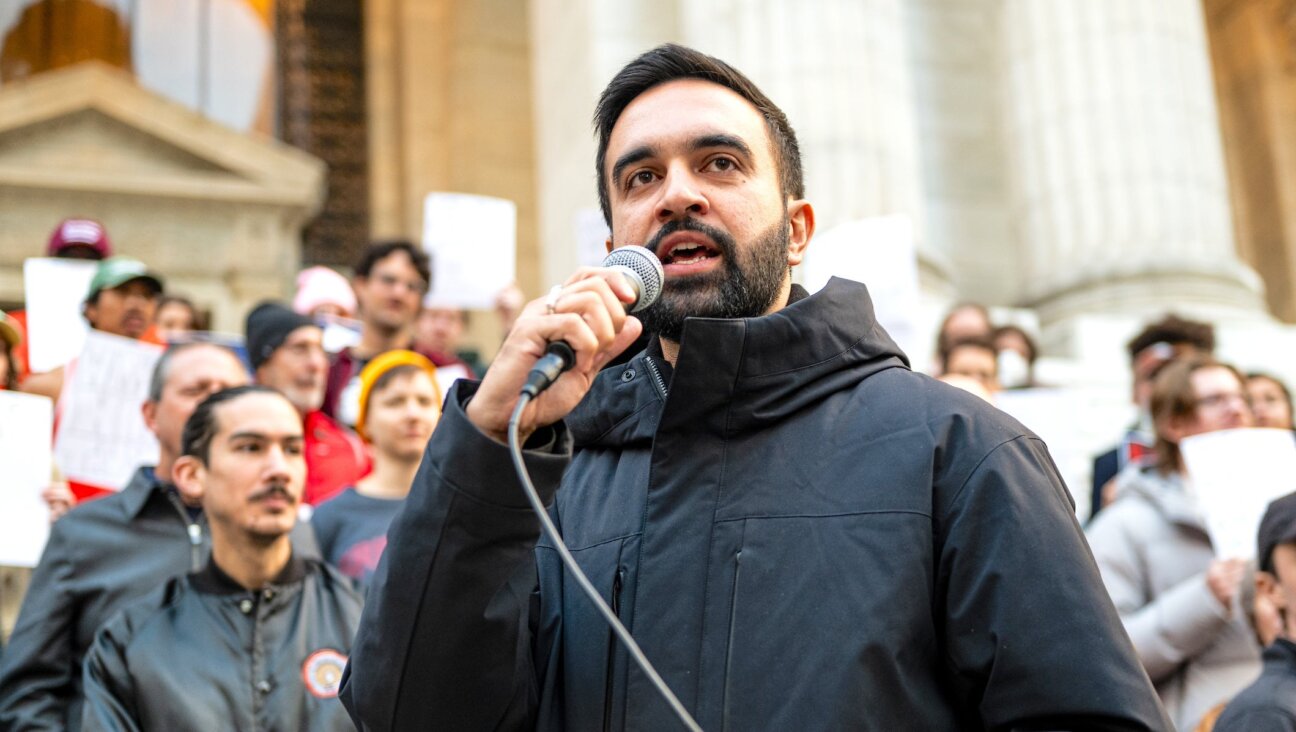Shalit Video Increases Pressure on Israel To Secure Soldier’s Release
The release of the video showing captive Israeli soldier Gilad Shalit alive and apparently healthy is likely to raise the pressure on the Netanyahu government to secure his release.
The Shalit family and advocates for the soldier’s release say they intend to launch an intensive public campaign to parlay public sympathy roused by the video to press the government to go the extra mile for his release.
But they’re not getting their hopes up just yet. More than three years have passed since Shalit was captured in a Palestinian attack along the Gaza-Israel border, and the Shalit family is worried that the momentum created by the video will fizzle and the soldier’s plight again will recede from the headlines.
In the video released last Friday, Shalit looks fit in a well-pressed uniform as he holds an Arabic newspaper dated Sept. 14, 2009.
Besides dispelling any lingering doubts about his physical well-being, the video’s public release was intended to soften any public opposition in Israel to the idea of trading hundreds of Palestinian prisoners – many involved in the worst terrorist attacks of the past decade – for a single Israeli soldier.
It could help Hamas get the kind of deal it wants and the Netanyahu government sell such a deal to the Israeli public.
The video has revived an intense debate in Israel over what price it should pay for Shalit’s release.
Opponents of a large prisoner exchange argue that surrendering to terrorist blackmail only will encourage more kidnappings, and that if Shalit is released, terrorists with blood on their hands who will be set free from Israeli prisons could kill more innocent Israelis.
Thirty-three heads of pre-military training academies across Israel wrote recently to Defense Minister Ehud Barak strongly urging him not to allow the release of terrorists with blood on their hands. They argued that all young recruits should know that army service is designed to defend the state and there are no “insurance policies.”
Barak and the Israel Defense Forces’ chief of staff, Lt.-Gen. Gabi Ashkenazi, counter that to boost motivation on the battlefield, soldiers should know that the state will do all it can to free those who are captured.
Larger issues are at stake, too. A major prisoner exchange deal between Israel and Hamas could help create conditions for a new and different kind of Israeli-Palestinian dialogue in which Hamas plays a pivotal role.
On the table would be the opening of the border crossing points into Gaza in return for a long-term cease-fire of 10 years or more. That, in turn, could pave the way for serious negotiations on Palestinian statehood with a unified Palestinian leadership.
For now, all this seems a far cry, with virtually everything on the Israeli-Palestinian agenda deadlocked. Releasing Shalit could help break the logjam.
Hamas officials hint that a deal could happen quickly. They are portraying the video – traded for the release of 20 Palestinian women in Israeli prisons – as the first phase of a larger deal. They say an exchange of Shalit for more than 1,000 Palestinian prisoners could happen in as little as six weeks.
Among those Hamas wants released are hundreds who actively participated in terrorist attacks against Israelis. That is the main stumbling block for Israel, which is loath to free prisoners it defines as terrorists with blood on their hands.
“If Israel wants to wrap up this affair, it could be concluded quickly,” Mahmoud a-Zahar, a Hamas official in Gaza, told Israel’s daily Ha’aretz, hinting that Hamas might show some flexibility. “Not everything is written in stone.”
Hamas clearly wants to deal, mainly to improve its image among Palestinians in the run-up to elections scheduled for early next year. The suffering and deprivation in Gaza following Israel’s 22-day military operation last December and January has hurt Hamas politically. A major prisoner release would greatly boost its public standing.
As to the contours of a possible deal, there is no argument about the majority of the prisoners Israel would release. The sticking point is some 450 prisoners Hamas wants – and insists upon without exception.
The London-based Arabic daily Ashark al-Awsat reports that there are two other major obstacles: Israel’s reluctance to release Israeli and eastern Jerusalem Arabs on the Hamas list. The paper also claims that Israel knows where Shalit is being held, but will not storm the hiding place for fear that Shalit would be killed by his captors before a rescue could be affected.






















